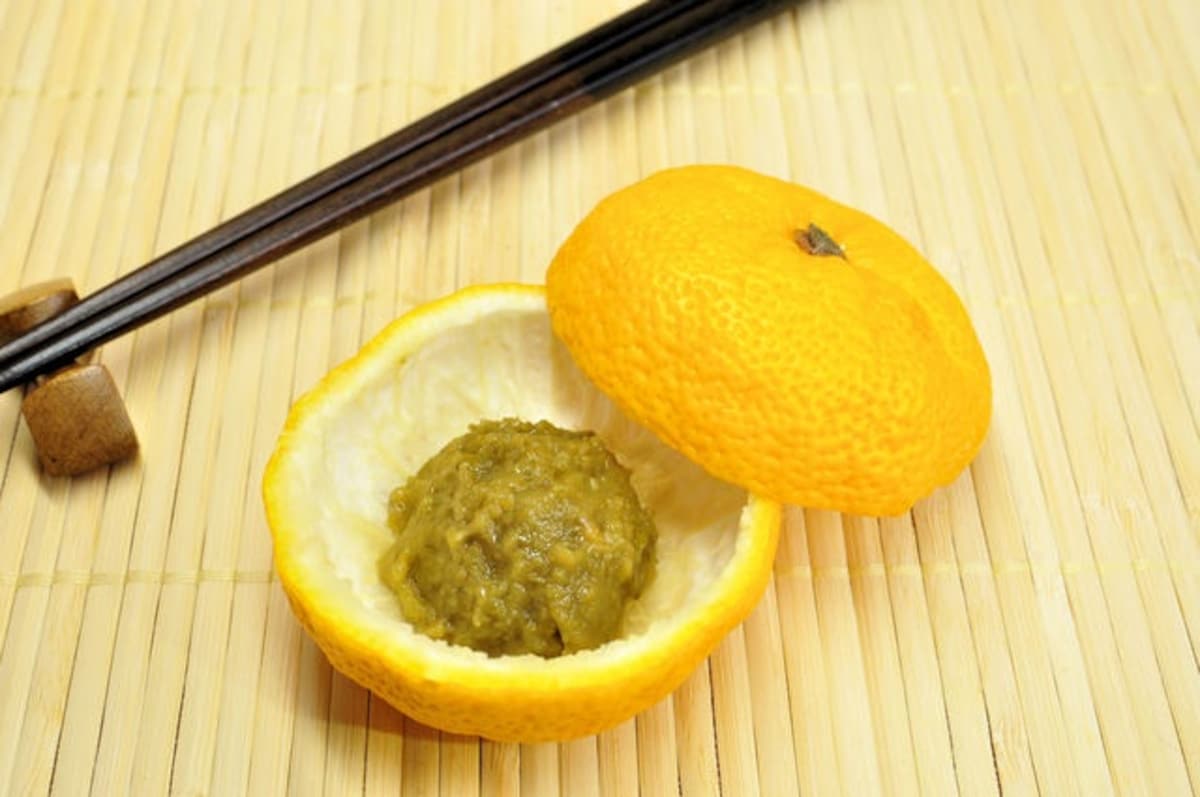Yakumi: Condiments with a Healthy Twist
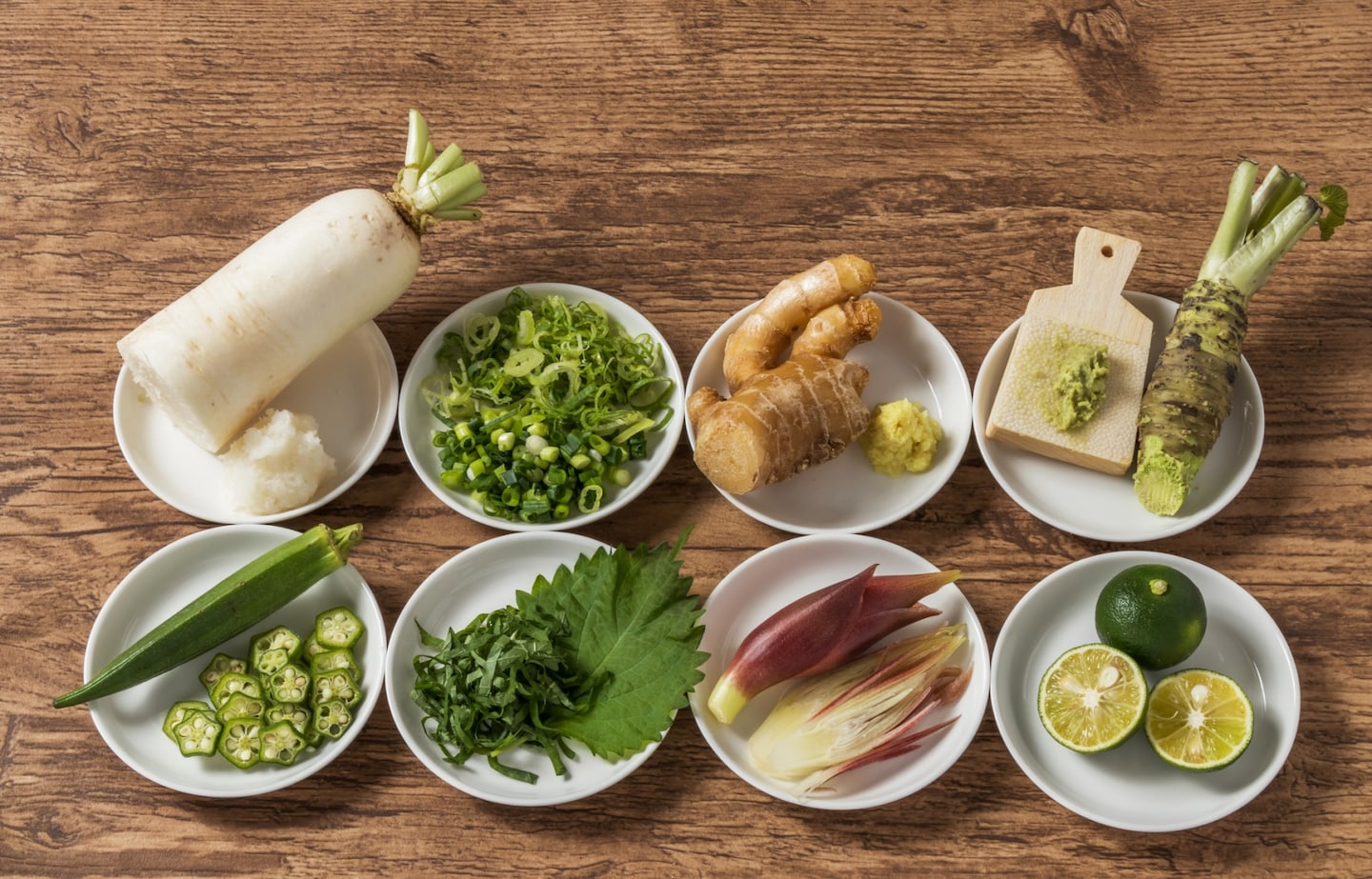
A pinch of grated ginger, a small bowl of thinly sliced negi (green onion) or a garnish of grated yuzu (lemon-lime citrus) peel: Each of these is an example of yakumi, a variety of condiment usually served in small amounts as an accompaniment to noodle dishes or nabemono (stews or foods cooked in a pot).
By AAJ Editorial TeamDelicious Healing
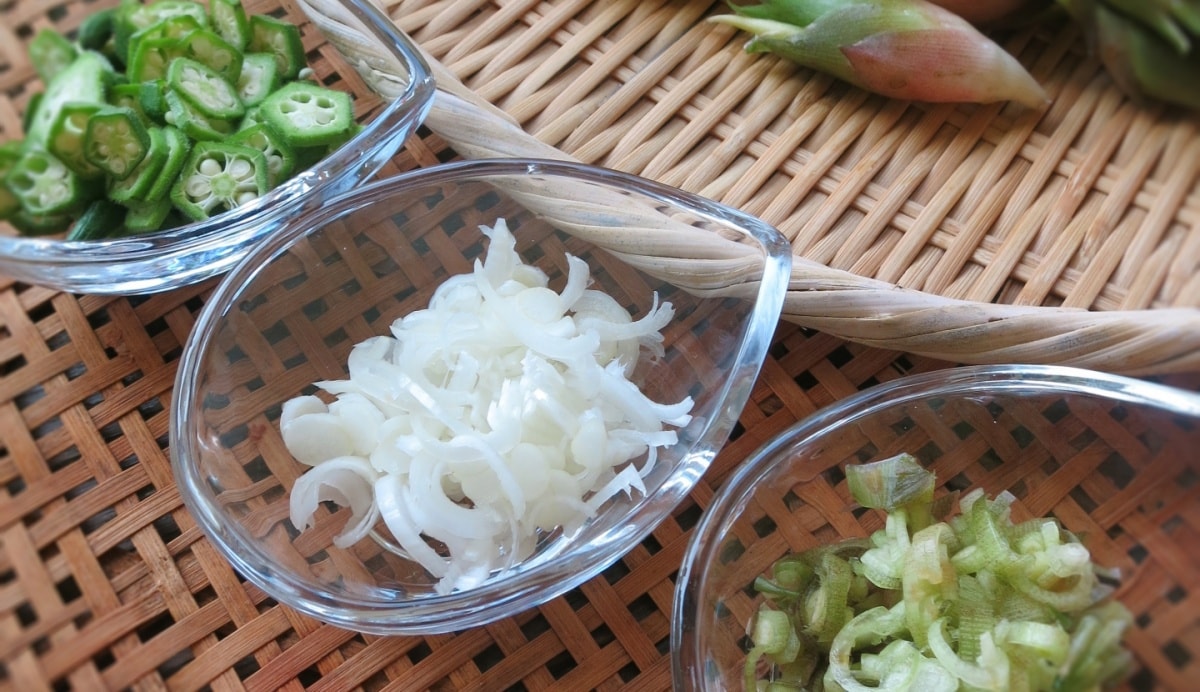
Sometimes added directly to a dish or stirred into dipping sauces, yakumi offer an extra swirl of flavor and kick that also aims to be healthy.
Directly translated as medicine (yaku) taste (mi), yakumi originally served as antidotes to a variety of ailments. Some, like ginger, were prescribed as cold remedies while others added spice and flavor to encourage those rebuilding their strength after an illness to eat heartily.
Designed to balance the ingredients in a particular dish or the elements of a meal, yakumi were also chosen to match the taste, dietary needs and aesthetics preferred by the diner and the cook. Today, yakumi continue to be viewed as integral to the overall health and harmony of a meal.
The five tastes of yakumi are: amai (sweet), nigai (bitter), san or suppai (sour), karai (spicy), and shio (salty).
Grated Daikon (Japanese Radish)

One of Japan’s most famous traditional vegetables, daikon have been popular since the Edo Period (1603–1868), with some varieties growing 20 to 35 centimeters (8–14 in) in length and 5 to 10 centimeters (2–4 in) in diameter.
High in vitamins A, B1, B2 and C, as well as a good source of fiber, calcium and iron, daikon is served fresh, dried or pickled. While the entire plant is edible, most people only eat the long white root.
Believed to aid digestion, daikon is often served with oily foods such as tempura. Traditional medicine used it as an anti-inflammatory and disinfectant, making it a popular cold remedy in the old days.
Shoga (Ginger)
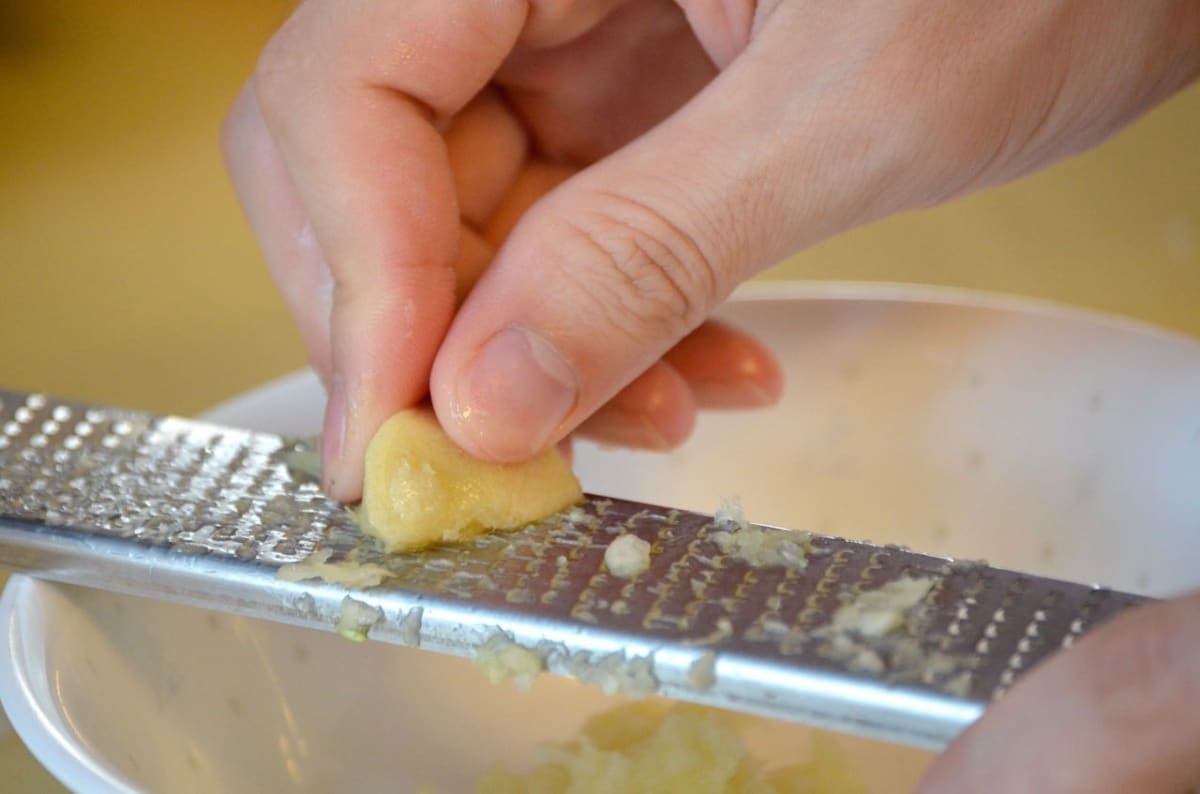
Ginger’s spicy personality lends zip and flavor to any dish. The rhizome of Zingiber officinale, ginger acts as a flavor enhancer, food preservative and digestive aid, as well as a household cold remedy. It encourages the production of saliva, which makes swallowing easier and helps break down food. Chinese medicine used its warming qualities to relieve phlegm and improve circulation.
Grated fresh ginger is often served with hiyayakko (cold tofu) or agedofu (fried tofu), where it balances the cold of the former and helps digest the oil of the latter. Gari (thinly sliced pickled ginger), a traditional sushi condiment, is believed to have a natural antibacterial effect while simultaneously cleansing the palate.
Negi (Green Onion)
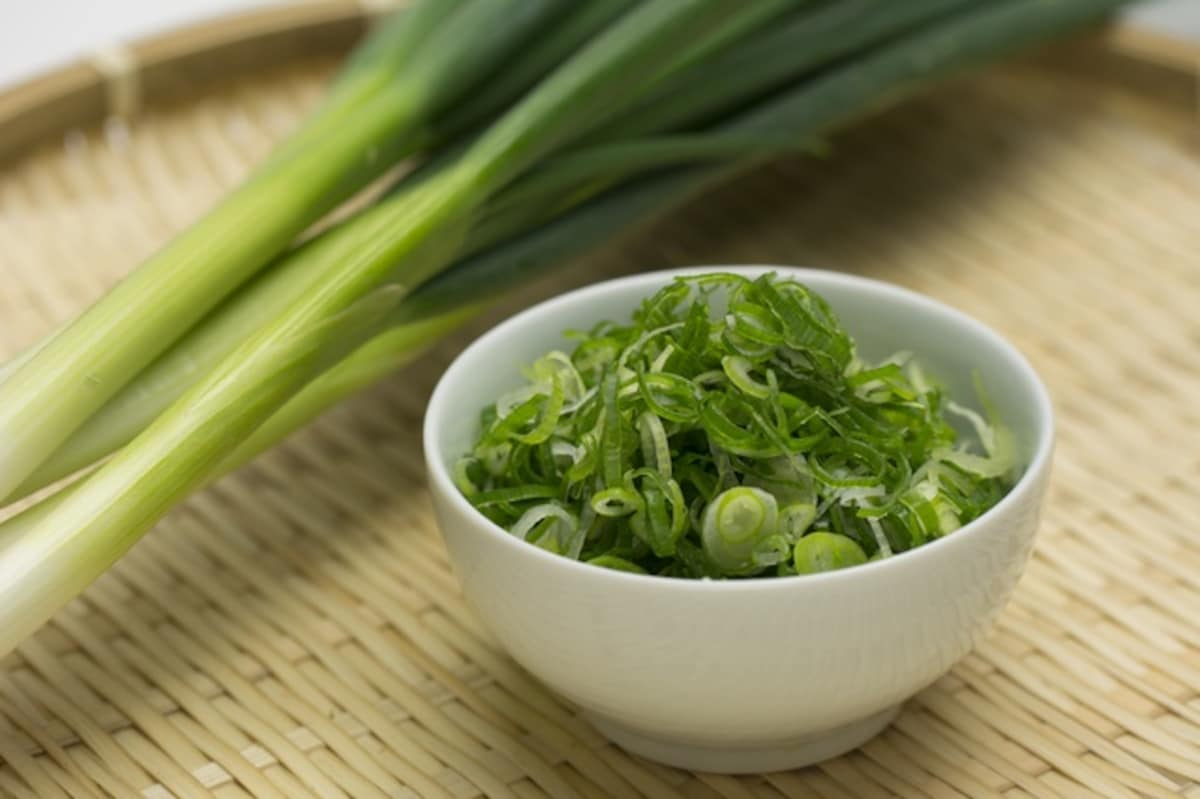
Long favored in Asia as a richly flavored condiment and excellent source of vitamin C, carotene and calcium, negi grow easily in almost every region of Japan, and they appear at nearly every meal in one form or another as an appetizing garnish.
Round, paper-thin slices get sprinkled on top of hot or cold noodle dishes, are added to dipping sauces for extra flavor and nutrition, or float serenely with chunks of tofu and enoki (mushrooms) in bowls of miso soup. Traditional medicine used negi’s flavor and nutrition as a delicious way to relieve tiredness, insomnia and inflammation, and to increase blood circulation.
Shiso (Perilla Frutescens)
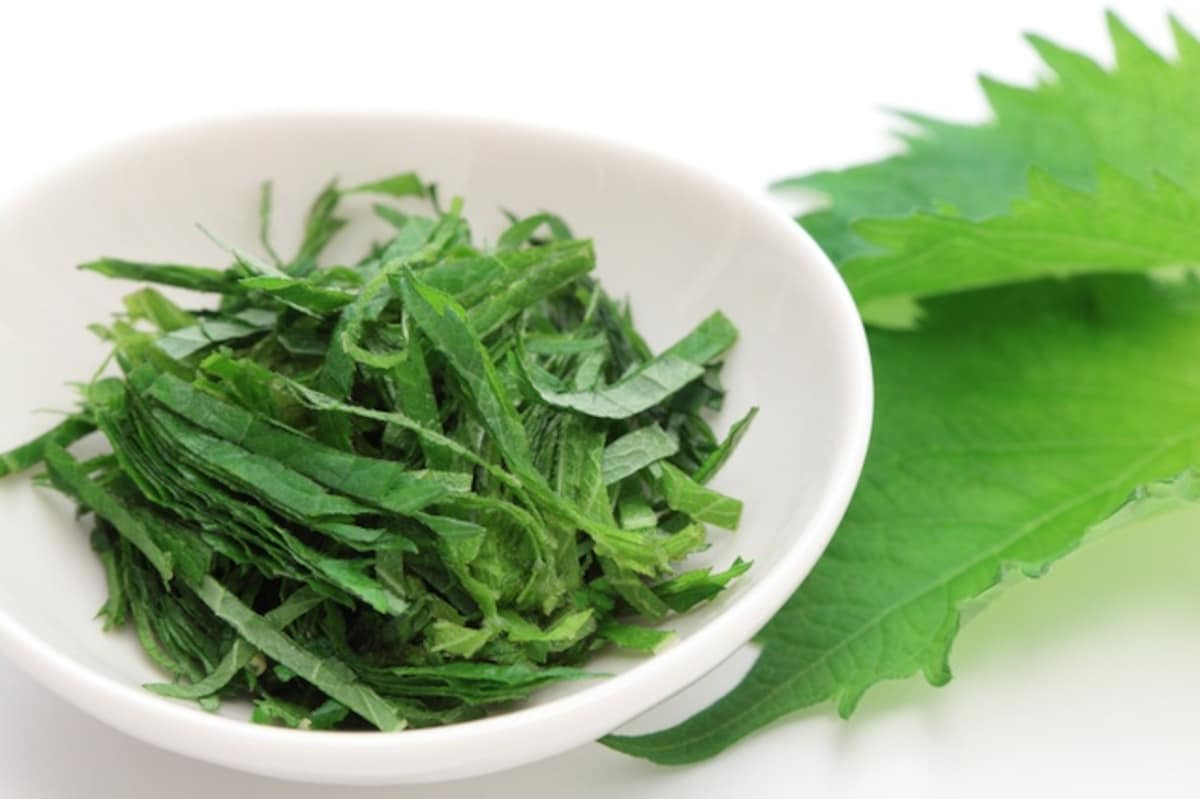
Shiso lends its sparkling flavor to everything from sushi to onigiri to rice. High in vitamins A, B1, B2 and C, as well as calcium and iron, it is also believed to increase appetite and aid digestion. Fresh shiso leaves also work as dividers in bento (lunch boxes), where their natural antiseptic qualities help keep food fresh and safe.
Akashiso (red shiso) is one of the primary ingredients in umeboshi (pickled plums), where the leaves lend their vibrant color to the plums during fermentation. Later dried and powdered, the leaves make a zesty topping for rice.
Myoga (Japanese Ginger)
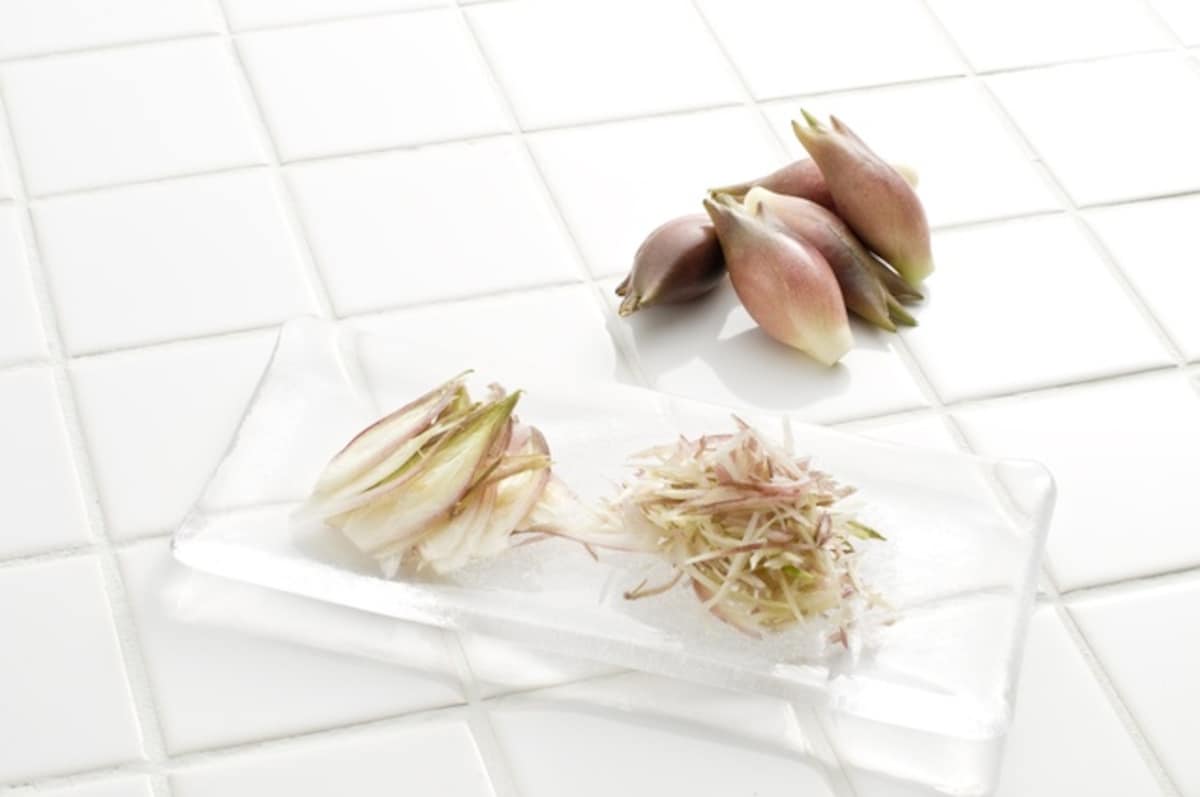
Myoga (Japanese ginger) is ginger’s little-known, mild-mannered cousin. Only the flower buds and shoots of this native Japanese perennial are eaten, cut into thin slices to top tofu, noodles or tempura, or used as a garnish for miso soup.
A rich source of fiber, iron and calcium along with vitamins C, B1, B2 and B6, myoga also aids with digestion. Available year-round, its flavor is at its best in June and July when harvest naturally occurs. This perhaps also explains why it has been believed to help preserve strength and stamina in the face of summer's heat since as early as the third century.
Wasabi
Ideally grown in the clear, running water of mountain streams, this wild, native Japanese plant has been cultivated here since the tenth century. While wasabi leaves are also edible, it is perhaps best known as wasabi paste, the sushi condiment made from its root, which also appears on the table with everything from soba to udon. Wasabi pickles, and peanuts coated with the spicy powder, also complement beer and sake.
Traditional medicine took advantage of wasabi's warming properties and nasal clearing abilities to relieve symptoms of the common cold. A good source of vitamins B6 and C, calcium, iron and manganese, wasabi’s anti-bacterial properties naturally gave it a place between sushi’s raw fish and rice. It is also believed to also effectively destroy E. coli bacteria.
Yuzu (Lemon-Lime Citrus)
A native Japanese citrus, yuzu’s distinct lemon-lime flavor has made it a culinary favorite used in a variety of ways in various stages of ripeness. Finely grated peel mixed with togarashi (Japanese hot peppers) makes zippy yuzu kosho (yuzu pepper) that often gets stirred into the broth of hot noodle dishes or the dipping sauce for cold ones. Tossed in the bath on the winter solstice, yuzu’s high levels of vitamin C get literally soaked in for an immune-system boost. The juice is often added to shoyu (soy sauce) to make a zesty ponzu (citrus-based sauce) or mixed with honey for yuzu hachimitsu (yuzu honey) for a healthy tea alternative.


